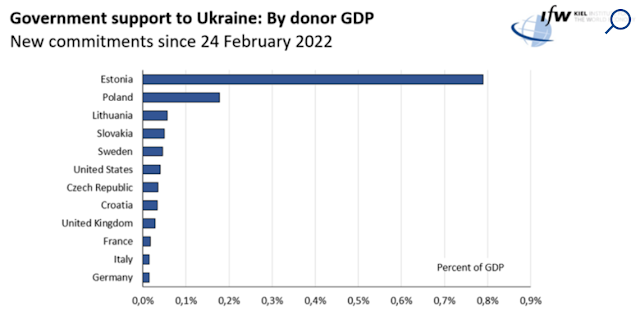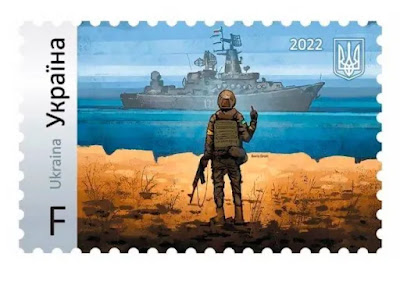As we watch another war wage in Europe fueled to a large degree by ethnic hatred and division, we find again people who are trying to promote the same cancerous mindset in our wonderfully diverse nation and Navy.
One of the primary ways to inflame sectarian tensions is to encourage separation while at the same time instituting a series of preferences and punishments - unequal treatment - based on what group you are defined as. In the zero sum game that is promotion and desirable billets that impacts income and career prospects - that's just accelerant.
The Diversity Bullies' diktat makes you disconnect your critical thinking skills. The fear that the commissariat has injected it to the bureaucracy guarantees that few will challenge statements the commissars ask that you make in public - regardless of how discredited or detached from reality they and their socio-political theories are.
I still stand by a simple standard - the benchmark from which all things in this area are measured. An American standard;
How far we have strayed ... but ok - it just means we need to keep trying.
This isn't a popular position in many areas of our society. It sure isn't popular in the senior ranks of our Navy. Few make it very far challenging today's diversity industry push to divide the people and set one group against another - so you can pretty much guarantee that leaders either are reading exactly what their UIC's diversity commissar gave them, or they are a true believer.
If you are going to swallow whole the diktat from the socio-political zampolits on your staff promoting division and sectarianism, then that's on you.
Recently, I don't think we've seen a senior Navy leader step in it so openly and so deeply as the Chief of Naval Personnel Vice Adm. John Nowell Jr., USN last summer.
It is about time for someone to step up, I guess.
Behold, Commander of Naval Surface Forces Vice Adm. Roy Kitchener, USN at Naval Surface Force Diversity, Equity and Inclusion Symposium April 7-8 in Norfolk, Va;
Commander of Naval Surface Forces Vice Adm. Roy Kitchener said ... thinks that focusing on diversity and inclusion can help the force gain further advantage over potential adversaries in multiple ways.
“Our adversaries think differently than we do,” Kitchener told Navy Times April 7 after speaking at the first-ever Surface Force Diversity, Equity and Inclusion Symposium in Norfolk, Virginia. “We have a lot of people in our country with a very diverse thought process, and that is a real strength when you’re teaching people tactics.
“When people can say, okay, what do you think the opponent is going to do? … Your opponent is not necessarily thinking like you, and what I found is that, if you can have people on our team that can think out of the box, perhaps different than the conventional Western way to think, it really is a game changer.”
How many Thursdays have we seen this mindset? You can see it a mile away. Let's take out the playbook.
So we all know that the Navy does not track "diversity of thought." It sure does not promote diversity in educational and socio-economic background in its senior leadership.
No, the Navy only defines "diversity" with regards to race, ethnicity, sex, etc ... you've seen the metrics. You've filled out the reports. You've seen the affinity groups. It is all in the open.
So, the implication here is, in essence, that a person's opinion is genetically coded and you can predict a person's way of thinking by their race and ethnicity. To say that is red in tooth and claw ethnic determinism.
Is that a Navy you want to be part of? A nation? No, not me either.
There are, of course, more inflammatory ways to describe a mindset that states that how and what a person thinks is somehow genetically coded - but I am not going to assume the worst of the good VADM. That being said, he has absorbed a world view that has the most brain-stem simplistic view of the people around him and is responsible for untold hundreds of millions of people slaughtered through the ages.
Looking first at a person's value on the basis of their perceived race, creed, color, or national origin is the cornerstone to disorder, sectarianism, division, and ultimately group violence.
You can tell that he has not intellectually pondered well what he's saying or is very well read on the topic.
There is this discredited talking point that he rolls out there like it is a fact;
More broadly, he added, “it’s a proven fact that the more diverse you are, you’re going to be a better and more high-performing organization. But I just see it simply from the warfare perspective, where being able to have a team that can think with that kind of agility against an opponent that probably doesn’t have that agility is a huge advantage.”
Proven? Really?
What did Sarah Kaplan say in FastCompany?
Pamela Newkirk points out in her new book, Diversity, Inc.: The Failed Promise of a Billion-Dollar Business, that the main beneficiary of the business case for diversity so far has what we might call the Inclusion Industrial Complex—consulting firms and Diversity & Inclusion professionals who can profit from putting diversity management programs in place.
HURTING THOSE WE ARE MAKING THE CASE FOR
The other reason the business case doesn’t work is that it hurts those the case is designed to help. Women or racial minorities, who are the supposed beneficiaries of the “business case for diversity,” may experience negative consequences.
The latest experiments have found that exposure to an organization’s business case for diversity decreased a sense of belonging to that organization for women and for members of the LGBTQ community, which was then associated with lower desire to join and lower performance on the job. The business case language has a way of making people feel “othered” and devalued.
Even more insidiously, the presence of diversity policies tends to make the majority groups feel like the organization is doing its part, which then legitimizes the status quo. While creating roles such as Chief Inclusion Officers or Directors of Diversity and Inclusion can drive action by giving a point person a mandate to make change, it also risks disengaging everyone else in the organization because they figure someone else has “diversity” covered.
How about Katherine Klein over at the Wharton School?
Do companies with women on the board perform better than companies whose boards are all-male? Many popular press articles and fund managers make this claim, citing studies by consulting firms, information providers and financial institutions, such as McKinsey, Thomson Reuters and Credit Suisse.
...
But research conducted by consulting firms and financial institutions is not as rigorous as peer-reviewed academic research. Here, I dig into the findings of rigorous, peer-reviewed studies of the relationship between board gender diversity and company performance.
Spoiler alert: Rigorous, peer-reviewed studies suggest that companies do not perform better when they have women on the board. Nor do they perform worse. Depending on which meta-analysis you read, board gender diversity either has a very weak relationship with board performance or no relationship at all.
Sarah Todd does a good job summarizing this intellectual FOD as well;
“I’m a big believer in responsible diversity, and I’m a minority myself—I would love [the McKinsey] studies to be true,” says Alex Edmans, a professor of finance at London Business School who was not affiliated with either the McKinsey papers or the new study. “But it’s important to make sure anything we say is based on rigorous research.”
...
When Hand and Green followed the McKinsey model, measuring firms’ financial performance between 2015 and 2019, they found “statistically insignificant relations” between the racial and ethnic diversity of a given executive team and that company’s financial success. This applied both to EBIT margins and to a number of other measures of financial performance, including industry-adjusted sales growth, gross margin, return on assets, and return on equity. McKinsey declined to comment on the study’s findings.
When a study’s findings are too good to be true
The authors emphasize that this isn’t definitive proof that there is no connection between racial and ethnic diversity and profits—more research is needed on that front. They also note several other important caveats, including that S&P 500 companies are not a random sample of public US firms, and that their method of identifying race and ethnicity among executives (using faces and names) is likely to overestimate the number of white executives. But they criticize McKinsey’s methodology, including its metric for measuring diversity among executives. They conclude that “caution is warranted in relying on McKinsey’s findings to support the view that US publicly traded firms can deliver improved financial performance if they increase the racial/ethnic diversity of their executives.”
Among the additional research that Green and Hand call for is a way to better examine whether there is any causal relationship between a firm’s diversity and its financial performance. McKinsey, by its own admission, is only looking at correlation. Green and Hand are working on a longitudinal study that will look at causation by gathering historical data on the racial and ethnic makeup of firms’ leadership teams in different years, then looking at the companies’ financial performance before, during, and after those years.
...
From an academic researcher’s perspective, he says, it’s unclear why McKinsey looks only at companies in the top and bottom quartile on diversity, as opposed to the top third or bottom third or not splitting them up at all. Also unclear is why the McKinsey studies focus on whether the most- and least-diverse companies beat the industry average of profitability. “The most standard way to do it is to say what’s the average profitability of diverse versus the average profitability of non-diverse” companies, he says.
In general, when reviewing a study, as Edmans explains in his 2017 TEDx talk “What to trust in a post-truth world,” it’s always worth asking whether the authors would have published it had they found the opposite result. “It’s really easy to get away with sloppy research if it confirms what we’d like to be true because we’ll accept it uncritically,” he says.
I think we can make a good guess about why McKinsey would do this. It is the same reason the Navy's branch of the diversity industry continues to feed such divisive, sectarian, and just plain incorrect socio-political talking points to our senior leaders.
Kitchener was joined by Rear Adm. Brendan McLane, the commander of Naval Surface Force Atlantic. McLane was once Commander, Navy Recruiting Command. Trust me, he knows exactly what metrics are tracked and what decisions are made about them.
Let's take this little pull quote from the same event apart. Words mean things.
“Retaining the very best people that we have and promoting them, that I think is an individual inside-the-lifeline task that each captain has to take on,” McLane said. “And that’s the reason we’re having this conference.
The title of this conference again is, "Naval Surface Force Diversity, Equity and Inclusion Symposium" - this isn't "tips on breaking out your best junior officers" so one must ask McLane to define, in detail, by what he means by "very best" in the context of this conference.
“If we can create an environment on every ship that’s inclusive — which is something I think our millennial sailors expect — and then everybody is treated equally,
That 'If" there SURFLANT, let's pull that thread. Are you implying we don't have that on every ship? Really? For those ships you are under your C2 diagram, which do not - by name? Why not? What action have you done to correct that? Maybe it's me - but that sounds like news...but wait;
and then we actually go above and beyond that and actually have equity so everybody’s getting everything that they need to succeed, I think the diversity part is going to take care of itself.
OK, so "everyone is treated equally" is not good enough? So we have to go to "equity?' Let's pause for a moment here.
Regulars on the front porch know this, but we have new readers every day, time to define our words closely. I'll let the social justice warriors over at RISE define that for us;
Key Takeaways:
- Equity and equality are different.
- Equality means everyone is treated the same exact way, regardless of differences.
- Equity means everyone is provided with what they need to succeed.
That is it. You can see exactly where he's getting his talking points from. Unless you missed the nuance - base upon your self-classified category under "equity" you may be given more or less of a thing of value - billets, rankings, time to qualify, etc - than someone who self-classifies as a different, less favored category.
He would like to see a Navy give and take away opportunity based on something as meaningless as race, creed, color, etc.
Quick, name one military or nation that has prospered under a racial or ethnic spoils system? Does that create unity or division? Does that create good order and discipline, or disorder and conflict? The Austo-Hungarian Empire? The Soviet Union? Yugoslavia? Rwanda?
“The talent part is going to take care of itself, but I think that’s just part and parcel of good leadership — of taking care of your sailors.”
Taking care of some of your Sailors more than others, it appears. I wonder if he's made that connection - or he considers a racial and ethnic spoils system is good for all Sailors?
So, there you go. There's your snapshot.
I've avoided this topic for awhile - and I didn't even cover the USAA sponsored sectarian festival over at USNA ... but you can play around at that link on your own time. This is enough I think.
Both Kitchener and McLane are great and accomplished professionals. Smart men doing the best they can in hard jobs of importance. As such, they have a lot on their plate. I'm not sure they should get a pass here. Nothing is more fundamental to a gloriously polyglot republic like ours than unity and - especially considering our history - an ongoing drive to be one people, not have our own government underwrite and encourage sectarian division. However, if people really believe otherwise, they should take action in the open - personally.
A final note here that should be clear to everyone. Both Admirals here are men of European extraction. One went to a small liberal arts college in Maine and the other at the US Naval Academy. You know the old saw ... if you really wanted "equity" then lead from the front.
Billets at this level are a zero sum game. If you want equity on selection boards, and if you really believe that diversity makes a "better and more high-performing organization" and that you love our Navy, then by all means lead from the front. Step aside and give your billet to someone that improves the metrics on the slide. That will make VADM Nowell feel better about his pictures too.
Make the future you want Admirals...but don't do it with people under 30. Be the change you want - don't make yourself feel better on the backs of young men and women born after the turn of the century - young enough to be your children.








.jpg)






















